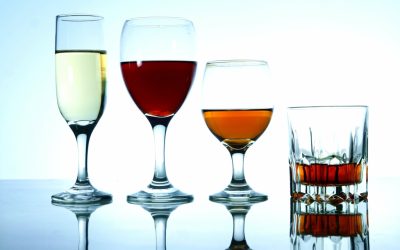For individuals undergoing this treatment, adhering to the prescribed regimen of taking naltrexone consistently is essential for achieving desired outcomes. Non-compliance can undermine the effectiveness of the method and may lead to a resurgence of cravings and drinking behaviors. The Sinclair Method, developed by Dr. John Sinclair in the 1990s, is a groundbreaking approach to treating alcohol use disorder (AUD). It is predicated on the principle of pharmacological extinction, which posits that the brain can be retrained to reduce cravings for alcohol through the use of medication.
What happens if I take naltrexone if I’m currently taking opiate pain drugs or heroin?
- TSM must be coupled with enough life stability to allow the extended timeline.
- While naltrexone is usually tolerated well, it can have side effects that can range in severity.
- The Sinclair Method, like all recovery methods, requires effort and work.
- Adherence to the method is important, as consistent use of medication before drinking leads to the reconditioning of the brain’s reward system.
- We provide tools to help reduce cravings and prevent over-drinking, so you can live a healthier, happier life.
However, abstinence is difficult to achieve for some and can be a barrier to treatment. The Sinclair Method (TSM) is a scientifically-backed approach to treating alcohol addiction that utilizes the medication naltrexone to help individuals regain control over their drinking habits. Sinclair method This method is unique because it doesn’t require complete abstinence from alcohol, making it an attractive option for those who struggle with traditional sobriety-focused treatments. Research suggests that it can be very effective in helping people reduce their drinking.
How Long Does the Sinclair Method Take to Complete?
This approach can mitigate the black-and-white “I blew it” mentality common in relapse scenarios. Over repeated sessions, the pleasurable or relieving feeling from alcohol is diminished, leading to less interest in drinking at all. Proponents argue that TSM addresses the conditioning aspects of alcohol use, rather than relying on sheer willpower or abrupt abstinence. Sign up and instantly access our private, at-home program built on a treatment with over 30 years of proven success in helping people reduce and moderate their drinking. By diminishing the reinforcement or reward of drinking, naltrexone helps you change your drinking habits. It doesn’t induce an immediate aversion to alcohol, but rather moves you towards indifference – you can take drug addiction it or leave it.
Endorphins and alcohol

According to Sinclair’s own research, the use of naltrexone in the treatment of alcohol use disorder can have a 78% efficacy rate. The Sinclair Method can help people reduce their drinking without quitting entirely. This can be an appealing option for people who want to drink socially on occasion but want to cut back and gain greater control over their alcohol consumption.
Craving Control
Moreover, the strict abstinence model can inadvertently exclude those who are unable or unwilling to commit to total sobriety, leaving them without viable alternatives for managing their condition. However, after 4-6 hours from the initial dose of naltrexone, this wall becomes weaker because the maximum naltrexone concentration in the blood has worn off and is being metabolized. Due to naltrexone’s concentration in the blood, some individuals may require a second dose of naltrexone or a higher initial dose to ensure this “wall” remains effective. The Sinclair Method was created for people to take their first drink after an hour from using naltrexone, creating a “wall” that prevents the alcohol induced euphoria or “happy drunk feeling”.

Nalmefene (6-desoxy-6-methylenenaltrexone) is similar to naltrexone and is used for the same purposes as naltrexone. Naltrexone should not be confused with naloxone (N-allylnoroxymorphone), which is used in emergency cases of opioid overdose. We will evaluate each case to make sure the patient can pursue this treatment. Anyone with cirrhosis should stop drinking because alcohol will only worsen the problem. The liver is the only organ in the body that has been shown to regenerate itself and often will respond to a comprehensive Naturopathic liver support program.
- It allows individuals to continue drinking while gradually reducing their dependence.
- Without the “buzz”, the association between alcohol consumption and the rewarding endorphin release is weakened, and your brain will gradually “unlearn” the behavior.
- The information contained on this website is not intended to be a substitute for, or to be relied upon as, medical advice, diagnosis, or treatment.
- Access resources to learn about naltrexone and the Sinclair Method, a proven approach to reduce drinking.
- The Sinclair Method combines continued alcohol consumption with the prescription drug, Naltrexone.4 Naltrexone reduces the pleasure of alcohol, which can help people cut back or quit drinking.
- When a person drinks alcohol, their brain releases endorphins (natural opioids), which activate the brain’s opioid reward system.

The Sinclair Method aims to break this cycle through pharmacological extinction. By taking naltrexone before drinking, the medication blocks the opioid receptors, preventing endorphins from binding and reducing the pleasurable effects of alcohol. Over time, this leads to a decrease in the brain’s association between alcohol and pleasure, ultimately reducing the desire to drink. Central to TSM is the concept of “pharmacological extinction,” the process by which the brain’s association between alcohol and pleasure is gradually weakened. When individuals take naltrexone before drinking, the repeated lack of reward during drinking sessions leads to the gradual weakening of the brain’s learned association between alcohol and pleasure.
Naltrexone: The Key to your Freedom from Alcohol
When someone you love is facing addiction, it’s hard to know where to turn. The Sinclair Method1 is meant for individuals who may not want to or are not ready to cut out alcohol entirely, but want to drink less. Contact us today to schedule an initial assessment or to learn more about our services. Whether you are seeking intensive outpatient care or simply need guidance on your drug addiction journey, we are here to help.
Understanding The Sinclair Method: How It Works & Who It’s For
TSM, with its patient-centered approach and flexibility, represents a critical addition to the spectrum of treatment options available, offering hope and a new direction for those seeking to overcome alcohol dependence. One of the key benefits of the Sinclair Method is that it appeals to individuals who are not interested in quitting drinking altogether but want to reduce their consumption. Therefore, this method generally casts a broader net to help people embrace the health benefits of reducing their alcohol intake.
Studies have demonstrated that participants using the Sinclair Method report fewer cravings and a decreased desire to drink over time, highlighting its potential as a transformative approach for those struggling with AUD. When individuals consume alcohol while on naltrexone, they experience diminished pleasure, which can lead to a decrease in overall consumption over time. The timing of naltrexone administration is also critical to its effectiveness within the Sinclair Method framework. Individuals are advised to take naltrexone approximately one hour before they plan to drink. The timeline for seeing results can vary, but many people start to notice a reduction in their drinking habits within a few months.
In most cases, these side effects are mild and lessen with time as people become more accustomed to the medication or can be minimized by taking the medication with food. Extinction takes time, and even occasional reinforcement can serve to maintain a behavior. In order for the Sinclair Method to be successful, it is important to always, without fail, take naltrexone before consuming any alcohol. Four Good Days is a 2020 film about the four days a drug addict woman has to stay sober to get a shot of naltrexone in a detox facility. Naltrexone should not be used by persons with acute hepatitis or liver failure, or those with recent opioid use (typically 7–10 days).

